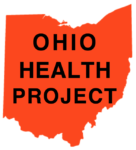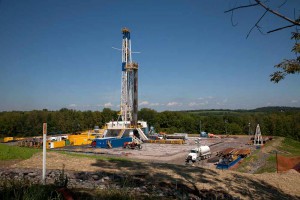Despite this year’s slumping gas prices, potential profits that lay far beneath Putnam County’s surface are piquing some companies’ interests.
The state Department of Environmental Protection approved a permit for Charleston-based Hard Rock Exploration to drill a vertical test well into the Rogersville Shale on Monday.
Underlying parts of northeast Kentucky and southwestern counties in West Virginia, the deep-shale formation is still relatively uncharted.
The test well would be drilled east of Blue Lick Road, just south of Winfield’s town limits, according to information from the DEP. This will be the second test well drilled into the Rogersville in West Virginia; the first was drilled by Cabot Oil and Gas last year, just northwest of Hometown.
While Cabot hasn’t released production data from the well, some industry officials are wondering if Hard Rock’s permit to drill is a sign of greater things to come.
Corky DeMarco, executive director of the West Virginia Oil and Natural Gas Association, said Cabot’s existing leases in Putnam County might have contributed to its decision to explore the Rogersville Shale.
“[Cabot] did a lot of shallow wells in that general area [and] are holding a lot of production because of previous wells,” he said.
But advancements in extraction technology, namely horizontal drilling and hydraulic fracturing, have created the possibility of a new wave of drilling in southwest West Virginia if the exploratory wells in the Rogersville Shale prove to be fruitful,
The Rogersville Shale differs from the Marcellus, a formation that has garnered attention nationwide and resulted in hundreds of fracked wells in Ohio, Pennsylvania and West Virginia in recent years. At about 5,000 feet underground, the Marcellus is more easily accessible than the Rogersville, which ranges anywhere from 9,000 to 14,000 feet underground. The depth of Hard Rock’s proposed well, however, is 15,000 feet, according to DEP. Efforts to reach Hard Rock for comment Tuesday were unsuccessful.
Geologists with the Kentucky Geological Survey conducted recent research on the depth, thickness and composition of the Rogersville, and found that those factors vary depending on location. In eastern Kentucky, for example, the produced gas could also include natural gas liquids, such as butane, ethane and propane, which can be sold for additional profit.
In West Virginia, the shale is deeper underground with more thermal maturity, according to David Harris, who heads the Kentucky agency’s Energy and Mineral Section. “[That] typically results in dry gas — pure methane — and lacks natural gas liquids,” he said.
While the extreme depth would increase production costs, it doesn’t necessarily make drilling and fracking into the Rogersville more dangerous, according to Harris.
“The deeper you locate these fracks, the safer they are — there’s many thousands of feet of rock between the productive zone and the surface,” Harris said in a phone interview Tuesday. “But, these deep wells have higher pressures, so if you lose control of the well, you’re dealing with a lot higher pressure coming up at the surface from these great depths.”
While the test well near Hometown is about a mile from residential dwellings, the well proposed by Hard Rock is about 1,000 feet from the nearest residence on Blue Lick Road.
Vertical deep well bores must be at least 200 feet from the nearest dwelling and 250 from a water well, according to Jake Glance, spokesman with DEP.
Harris expects the existing test wells in Kentucky and West Virginia will be re-permitted as horizontal wells down the road if production data looks promising.
“It may not be economic right now under current [gas] pricing, but companies can benefit by drilling wells, determining what’s down there [and] proving reserves,” Harris said. “It’s basically a future asset — they’re trying to add the reserves to their bottom lines.”
Reach Elaina Sauber at elaina.sauber@wvgazettemail.com, 304-348-3051 or follow @ElainaSauber on Twitter.










